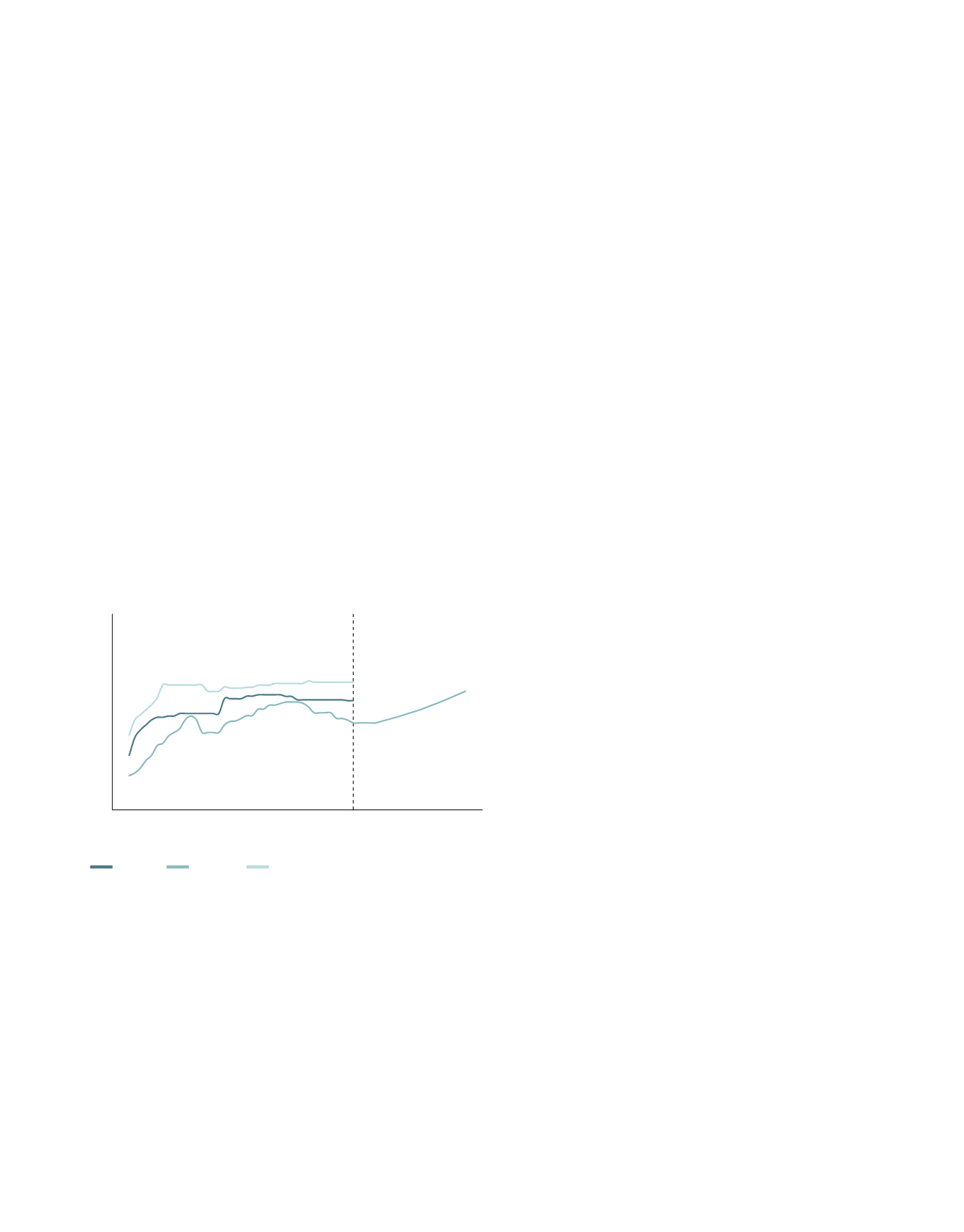
As Figure 13 highlights, the transport and storage sector has
accounted for 25% of gross take-up in Brisbane between
2013 and 2015. This is relatively consistent with the occupier
mix in both Sydney and Melbourne. The manufacturing
industry accounted for 30% of take-up, followed by retail
trade with 21% and wholesale trade with 10%. Meanwhile,
the mining sector accounted for only 1% of total gross take-
up, indicating that the industrial property sector’s direct
exposure to the mining and resource sector is minimal.
Rents
In the 10 years to December 2015, prime net rents have
increased by 2.1% p.a. in the Southern precinct, 2.0% p.a.
in the Northern precinct and 1.8% p.a. in the Trade Coast
precinct of Brisbane (Figure 14). Rental growth has declined
somewhat in the Southern precinct in the last two years due
to greater development competition, higher speculative
development and a moderately higher vacancy level. As a
result, rental growth over the last five years has averaged
-0.3% p.a.
Figure 14: Brisbane prime grade net rents
Upward pressure on rents is expected from 2017 in line
with the projected recovery in the broader economy. Rental
growth in the Southern precinct of Brisbane is forecast to
average 2.2% p.a. over the five years to 2020.
Outlook – Fundamentals
While in recent years the economic growth profile of
Queensland has been below trend, the market is poised for
a recovery with demand supported by the early stages of a
housing investment cycle, improvement in tourism and net
exports as the LNG cycle moves from the investment to the
production stage.
Manufacturers linked to the housing sector along with
logistics providers are leading demand for industrial space
across the Brisbane market. Manufacturers of household
goods and housing construction materials are benefitting
from the growth of residential development in South East
Queensland. Meanwhile logistics companies are being
supported by the continual growth of retailers and third
party logistic providers. Logistic providers are also aiming to
improve operational efficiencies by securing newer facilities
in strategic locations while leasing conditions are favourable.
New estates have been activated along the Logan Motorway
corridor in the last 12 months and strong competition for
tenants has ensued. The leasing market is expected to remain
competitive for landlords in the short term due to a weaker
economy and the take-up of speculative space. This may result
in elevated tenant incentives or longer letting up periods.
Outlook – Investment
Interest in Brisbane core industrial assets remains very strong
with well-leased assets continuing to achieve excellent
sale outcomes. However, a lack of opportunities is forcing
investors to look further up the risk curve, expecting that an
improvement in the economy will support leasing demand
across the asset quality spectrum.
Source: JLL Research
* As at Q4/2015
50
75
100
125
150
Prime grade existing
net face rents $/sqm p.a.
Dec-05
Dec-10
Dec-14
Dec-08
Dec-12
Dec-16
Dec-19
Dec-07
Dec-11
Dec-15
Dec-18
Dec-09
Dec-13
Dec-17
Dec-20
Northen
Southern
Trade Coast
Forecast
Dec-06
.89
A-REIT ANNUAL REPORT
2015/2016


